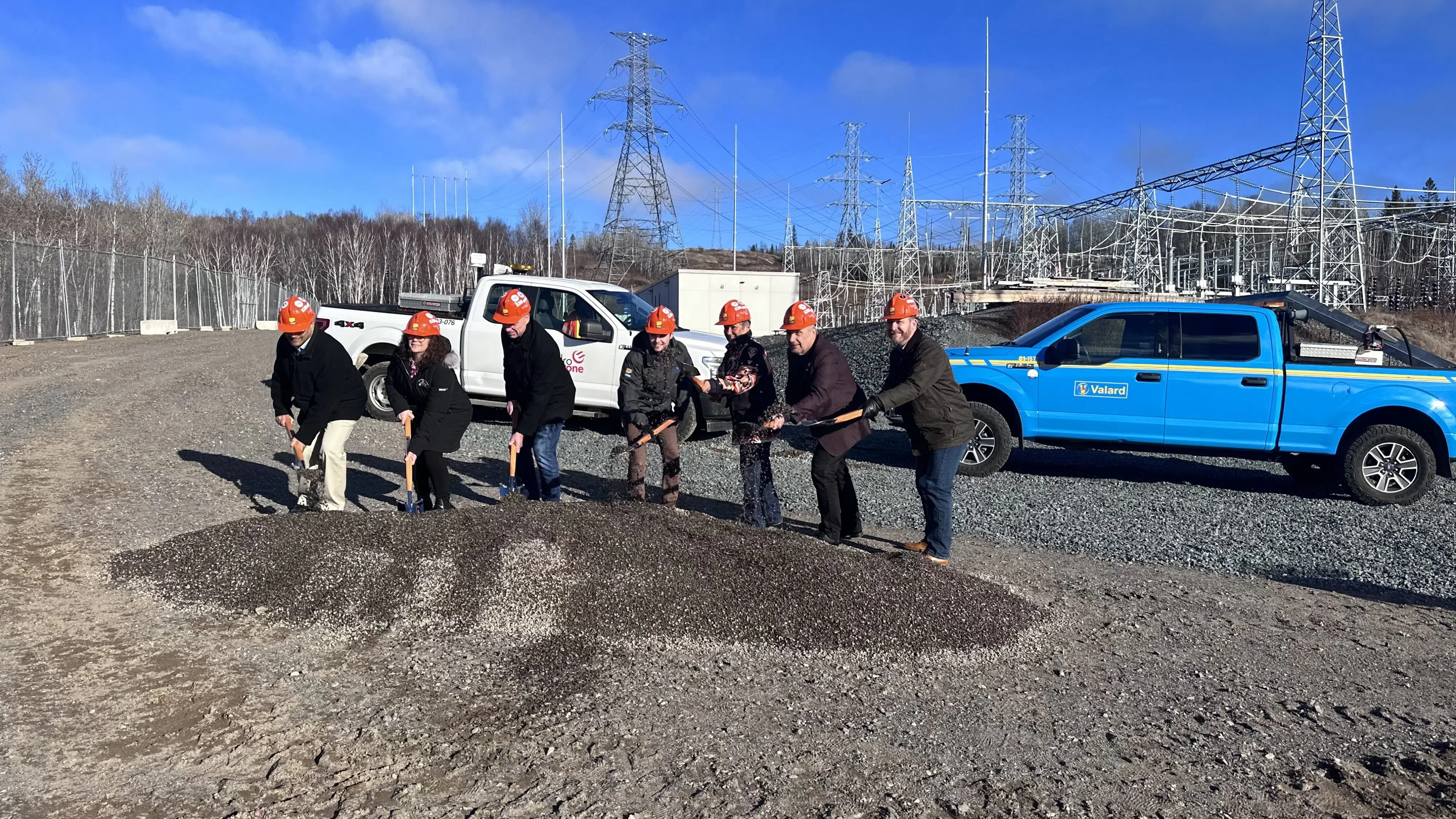
(Left - Right) Hydro One, VP of Strategic Projects & Partnerships Sanjiv Karunakaran, Fort William First Nation Chief Michele Solomon, President and CEO of Hydro One, David Lebete, President of GLP, Daniel Morriseau, Shuniah Mayor & NOMA President, Wendy Landry, Atikokan Mayor Rob Ferguson, President, Valard Construction LP, Carey Kostyk at Waasigan Transmission Line Project groundbreaking ceremony - (CJ Goater/Acadia Broadcasting)
The Northwestern Ontario Municipal Association (NOMA) has completed an analysis of the electrical needs in the region.
According to NOMA, the study was done as the region has seen unprecedented growth in mining.
They found that the region’s current and proposed transmission systems are unable to meet the demand that will be required.
The organization says the region needs an additional 1,484 megawatts of power to meet the increasing energy demands.
“There are a total of 41 major exploration projects, advancing to production, throughout the region with 37 of those projects aiming to be operational no later than 2033,” explained the Co-Chair of the NOMA Northwest Energy Task Force, Jim Vezina. “Thirteen of the advanced projects are for the strategically important critical minerals, six are copper-nickel palladium/platinum, four are lithium and there are one each of chromite, graphite, and zinc.”
“From an economic perspective, 16 of the mines estimate capital expenditures totaling $7.6 billion over the next 10 years with eight of the projects requiring 3,820 persons to construct the mines and nine will require 2,360 operating staff”
New transmission lines, along with increased forest biomass and hydroelectric generation are seen as solutions to the problem.
“Even with the soon-to-be-built Waasigan Bulk Transmission Line, there would be a significant shortfall of power in the Dryden, Red Lake, Ear Falls and Pickle Lake area,” said Co-Chair Iain Angus. “The Task Force also identified shortfalls in the area north of Nipigon, the immediate Thunder Bay area, and in the Shebandewan area to the west.”
NOMA has come up with the following solutions to increase energy production in the region:
- Double the size of Stage II of the Wassigan Bulk Transmission and extend the project to Red Lake
- Expand the Watay Power line from Red Lake to the Frontier Lithium Mine
- Double the size of Stage I of the Watay Power line from Dinorwic to Pickle Lake
- Re-route the first phase of the transmission line to the Ring of Fire through Geraldton
- Upgrade transmission system west of Thunder Bay to not only support the area mines but to stabilize energy distribution
NOMA adds that solutions need to be found to ensure that Thunder Bay can accommodate potential mining processing facilities.
“The Task Force also recognized the opportunity for an increase in the number of biomass generation facilities distributed throughout the region utilizing between 30 to 40 per cent of the existing harvest added Angus. “The Task Force has called for the IESO to reserve a block of MWs dedicated to forest biomass projects including bioheat & district energy procurement mandates for public building infrastructure.”
“In addition, the two major facilities with Power Purchase Agreements (Atikokan Generating Station and Thunder Bay Pulp and Paper) should be extended to 10 years and where feasible their energy output increased significantly.”
The organization has sent letters to the President of Hydro One, Ontario’s Ministry of Energy and Electrification, the Minister of Natural Resources, the Associate Minister of Forestry and Forest Products, and the IESO outlining the need for additional bulk transmission lines in the Northwest.
“If the Northwest is to benefit from the unprecedented mining development and the province is to benefit from having these mines connected to the provincial grid then whoever forms the next government needs to take these recommendations seriously and as a priority,” said NOMA Vice President, Kristen Oliver.
